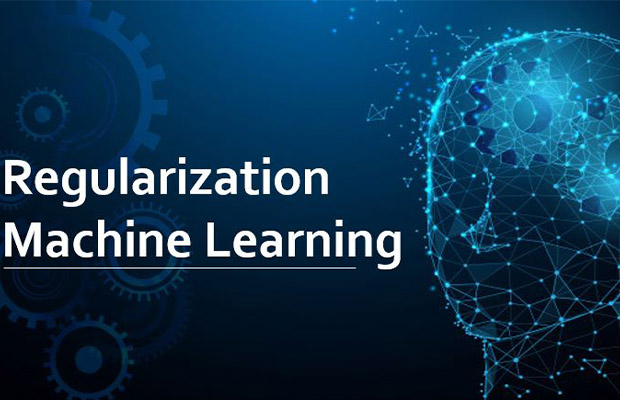One can easily overfit or underfit a machine learning model while it is being trained. To prevent this, we use regularization in machine learning to accurately fit a model onto our test set. So what is regularization in machine learning?
In order to obtain the best model, regularization techniques help us lower the likelihood of overfitting.
You can learn more about regularization in machine learning by reading on.
Table of Contents
What Is Regularization In Machine Learning?
Regularization describes methods for calibrating machine learning models to reduce the adjusted loss function and avoid overfitting or underfitting.

We can properly fit our machine learning model on a given test set using regularization, which lowers the errors in the test set.
Read More: What are Machine Learning Solutions?
How Does Regularization Work?
A penalty or complexity term is added to the complex model during regularization. Let’s consider the simple linear regression equation:
y= β0+β1×1+β2×2+β3×3+⋯+βnxn +b
In the above equation, Y represents the value to be predicted
Features for Y are X1, X2, and Xn.
β0,β1,…..βn are the weights or magnitude attached to the features, respectively. Here, stands for the model’s bias, and b stands for the intercept.
Now, in order to create a model that can accurately predict the value of Y, we will add a loss function and optimize a parameter. The loss function for the linear regression is called RSS or residual square sum.
2 Regularization Techniques
Ridge Regularization and Lasso Regularization are the two main categories of regularization techniques.
Ridge Regularization
It is also referred to as Ridge Regression and modifies over- or under-fitted models by adding a penalty equal to the sum of the squares of the coefficient magnitude.
In other words, the mathematical function that represents our machine learning model is minimized, and coefficients are computed. It is squared and added how big the coefficients are. By reducing the number of coefficients, Ridge Regression applies regularization.
Lambda λ is used to represent the penalty term in the cost function. We can control the penalty term by modifying the values of the penalty function. The penalty’s severity affects how much the coefficients are reduced. The parameters are trimmed. In order to avoid multicollinearity, it is used. Additionally, it causes coefficient shrinkage, which lessens the complexity of the model.
Lasso Regression
By introducing a penalty equal to the sum of the absolute values of the coefficients, it modifies the over- or under-fitted models.
Coefficient minimization is also carried out by lasso regression, but the true coefficient values are used rather than the squared coefficient magnitudes. In light of the fact that there are negative coefficients, the coefficient sum can therefore also be 0.
Key Difference Between Ridge Regression And Lasso Regression
- Ridge regression is mostly used to reduce overfitting in the model, and it includes all the features present in the model. The coefficients are shrunk, which lowers the model’s complexity.
- Lasso regression helps to reduce the overfitting in the model as well as feature selection.
What Is The Purpose Of Regularization?
Variance, i.e. variability, is a characteristic of a standard least squares model. this model won’t generalize well for a data set different than its training data. Regularization, significantly reduces the variance of the model, without a substantial increase in its bias. Therefore, the regularization techniques described above use the tuning parameter λ to control the effect of bias and variance. As the value of lambda increases, the value of the coefficients decreases, lowering the variance. Up to a point, this increase in λ is advantageous because it only reduces variance (avoiding overfitting) while maintaining all of the data’s significant properties. But once the value reaches a certain point, the model begins to lose crucial characteristics, leading to bias and underfitting. As a result, care should be taken when choosing the value of &lambda.
You won’t require anything more fundamental to start with regularization than this. It is a practical method that can help increase the precision of your regression models. A popular library for implementing these algorithms is Scikit-Learn. It has a wonderful API that can get your model up and running with just a few lines of code in python.
If you liked this article, be sure to show your support by clapping for this article below and if you have any questions, leave a comment and In my best effort, I will respond.
For being more aware of the world of machine learning, follow me. It is the most effective way to learn when I publish new articles similar to this one.
Other Posts You Might Like: Model Parameters In Machine Learning




